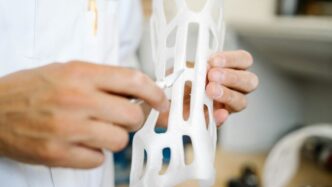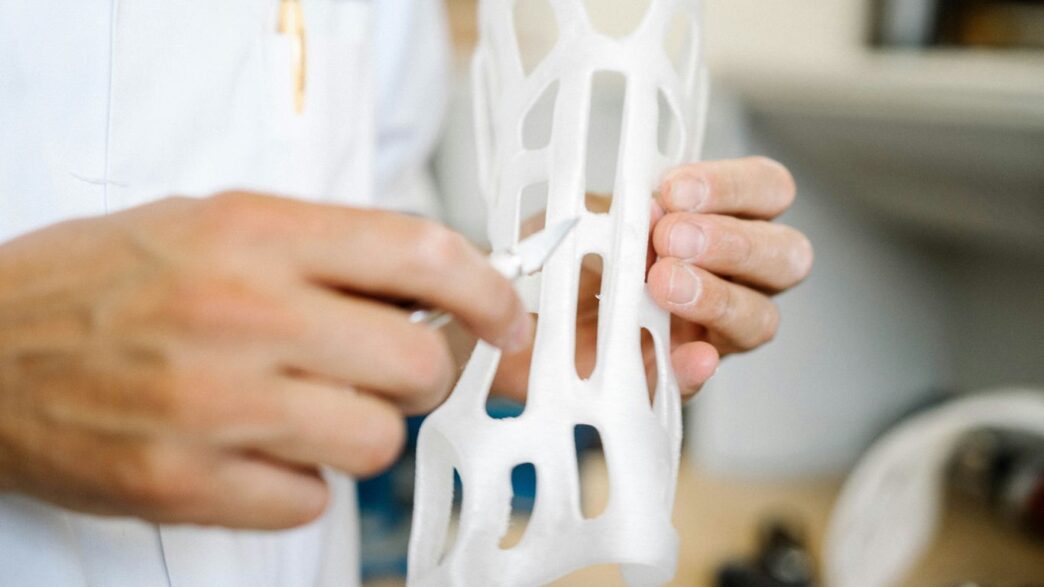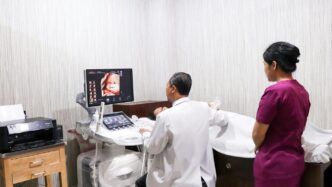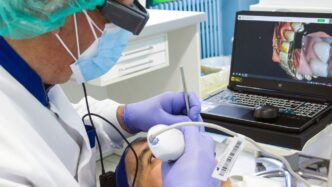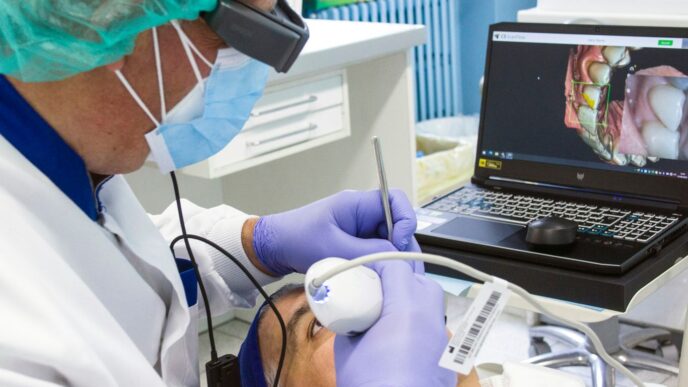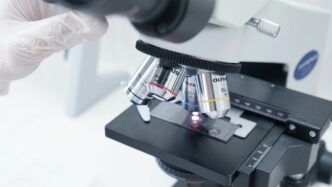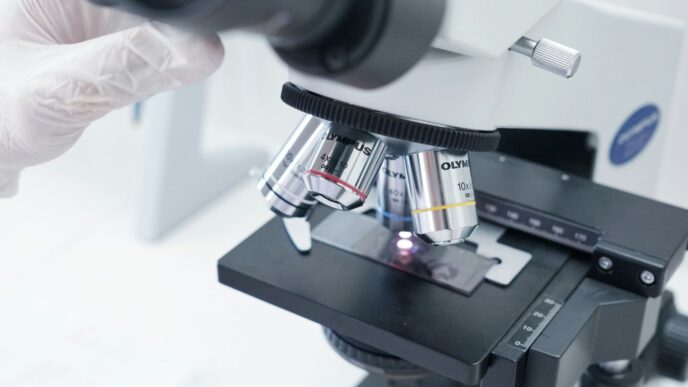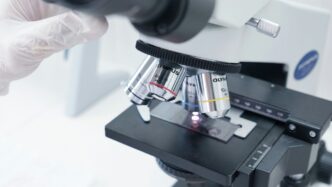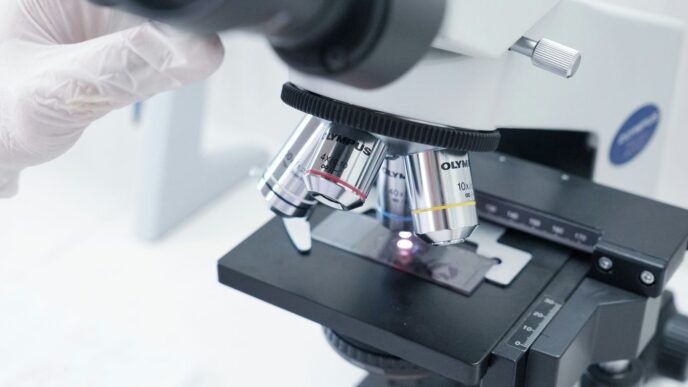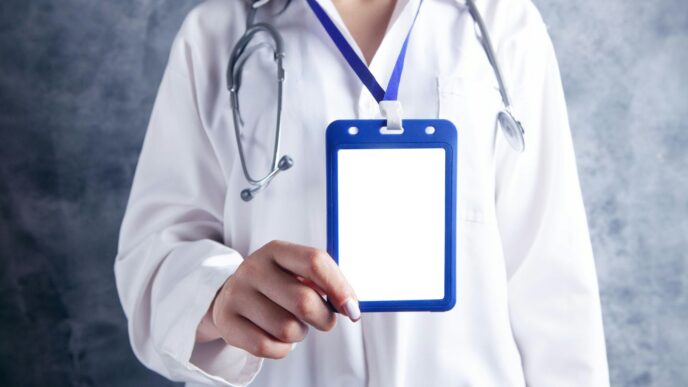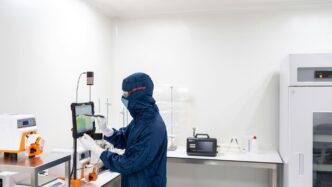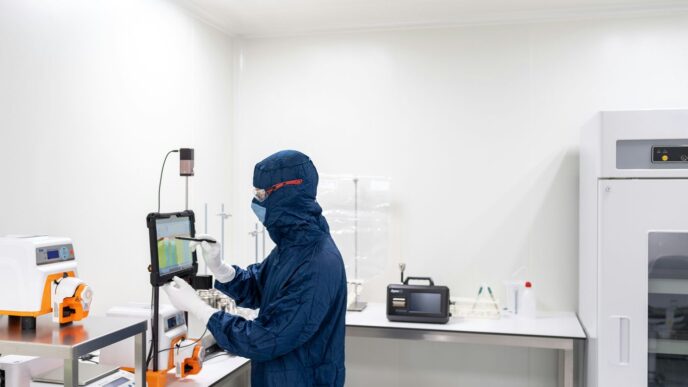3D printing in the healthcare industry is changing the way doctors, hospitals, and patients think about care. Instead of relying on a one-size-fits-all approach, this technology lets medical teams create items that fit each patient’s needs. From custom implants to models that help surgeons plan tricky operations, 3D printing is popping up all over hospitals and clinics. The market for this tech is growing fast, and more hospitals are using it every year. While there are still some bumps in the road, like making sure everything is safe and approved, the benefits are hard to ignore. Let’s look at how 3D printing is making a difference in healthcare today.
Key Takeaways
- 3D printing in healthcare industry makes personalized devices and implants more common, improving fit and comfort for patients.
- Hospitals can now create models and tools on-site, helping doctors plan surgeries and train more effectively.
- The technology often lowers costs and cuts down on waste, making care more affordable and eco-friendly.
- Research using 3D printing is speeding up the development of new treatments, including bioprinted tissues and organs.
- There are still challenges, like safety rules and quality checks, but the potential for better and more accessible care is huge.
Advancements in Personalized Medicine Through 3D Printing in Healthcare Industry
Personalized medicine used to sound futuristic, but with 3D printing, it’s happening right now in everyday clinics and operating rooms. Medical teams can now make treatments and devices that fit each patient’s body and needs—not just a one-size-fits-all guess. Here’s how this new approach is changing the game.
Custom Orthopedic Implants and Prosthetics
For years, patients needing joint replacements or prosthetics had to settle for whatever size was close enough. Now, 3D printing lets doctors and engineers design hardware that actually fits the person, down to the millimeter. This isn’t just about comfort—it means people can move easier and heal better. Lower limb prosthetics for growing kids, unique shapes for bone replacements after trauma, or even a partial jaw can be made exactly for the individual. See the difference it can make in daily life:
- Greater comfort, almost like the device is a natural extension
- More precise fitting, so less risk of pain, sores, or awkward walks
- Children and adults both benefit, especially when off-the-shelf options fail
Tailor-Made Drug Delivery Systems
Dosing medicine isn’t one-size-fits-all. 3D printers are now helping to create special pills or delivery devices that match a person’s exact dosage and release timing, making treatments safer and more effective. Multi-drug tablets, dissolvable implants, or custom-shaped pills are all possible now, thanks to 3D printing. For example, experts are now designing patient-specific dosage forms and multidrug polypills that take a person’s age, size, or health conditions into account.
Here’s a quick look at examples of customized drug delivery possible with 3D tech:
| Solution | Practical Impact |
|---|---|
| Combined multi-drug tablets | Simplifies medication routines |
| Modified-release pills | Improves timing of drug effects |
| Individualized dosages | Lowers risk of side effects |
Patient-Specific Devices for Enhanced Outcomes
Not all medical issues need drugs or implants. Devices like hearing aids, dental aligners, airway stents, or even surgical guides are also being printed to fit the one unique patient. This approach means doctors can solve tricky cases, where traditional devices just don’t work. With 3D printing, turnaround is fast, often producing devices on demand right in the hospital.
Some reasons patient-specific devices matter now:
- Immediate adaptation to unique medical conditions
- Reduced wait times—devices can be made within days, if not hours
- Support for rare and complex cases that standard solutions miss
Personalized medicine is more than a trend—it’s leading to better care, fewer complications, and happier patients, one 3D-printed solution at a time.
Role of 3D Printing in Surgical Planning and Training Within Healthcare
3D printing in healthcare has changed a lot about how surgeries are planned and how new medical professionals learn their trade. Instead of relying only on two-dimensional images or cadavers, many doctors now use models that are designed directly from a patient’s own scans.
Preoperative Anatomical Models for Precision Surgery
Surgeons can now hold a life-size replica of a patient’s organ, bone, or tumor before they ever make the first incision. These models come from real MRI or CT scan data, so they match the patient’s anatomy exactly. Here are some ways these 3D-printed models help in surgery:
- Allow doctors to see and touch complex structures before cutting
- Make it possible to rehearse tricky sections of an operation
- Reduce uncertainty in the operating room, often leading to quicker and safer surgeries
Here’s a quick table showing the practical results that have been reported:
| Benefit | Typical Reduction |
|---|---|
| Surgery Time | 1 to 2.5 hours |
| Operation Costs (per case) | $3,500–$5,500 |
| Surgical Complications | Reduced |
Improving Medical Education with 3D-Printed Replicas
Learning from a textbook or a slide just isn’t the same as actually holding something in your hands. That’s where 3D-printed models come in for students and trainees. They can practice on realistic versions of hearts, skulls, or blood vessels—none of the pressure of working on a real person or the cost of a cadaver.
Some common benefits are:
- More chances for hands-on learning before seeing real patients
- Ability to repeat practice over and over with no risk
- Easier to explain conditions and procedures to patients and families using a physical model
Patient-Specific Surgical Instruments and Guides
You’ve probably heard stories where a surgeon has to shape or adjust implants right in the operating room. With 3D printing, it’s possible to make cutting guides or surgical tools that are built just for one patient. These instruments fit perfectly, so operations go smoother and risks go down. A few ways they’re used:
- Guides make sure screws or plates are placed exactly right for bone surgeries
- Tailored templates help avoid blood vessels or nerves in complex procedures
- Some hospitals are even printing clamps or holders that match the shape of a patient’s anatomy
All in all, 3D printing has brought a hands-on, patient-centered approach to both planning and practicing surgery. It cuts down on surprises in the operating room and gives trainees a head start before seeing their first real cases. As more hospitals start to use this technology, you’ll likely see shorter surgeries, fewer errors, and medical students who are simply more prepared.
Cost Efficiency and Accessibility Provided by 3D Printing in Healthcare Industry
The rise of 3D printing in medicine is changing the way hospitals and clinics handle everything from medical devices to custom implants. What’s really making this technology stand out is its potential for big savings and improved access to care, especially for folks who might otherwise be left out. Let’s break down how this is happening.
Reduced Manufacturing Costs for Medical Devices
Traditional manufacturing for custom medical devices is usually slow, expensive, and sometimes wasteful. 3D printing flips that around by using just the amount of material needed and producing items to precise specifications, which seriously cuts down on waste and cost.
Here’s a quick comparison of manufacturing costs:
| Application | Traditional Cost | 3D Printing Cost |
|---|---|---|
| Custom Prosthetics | $5,000+ | $50 – $500 |
| Surgical Planning Models | $1,200+ | $300 – $500 |
| Dental Appliances | $500+ | $50 – $150 |
- Localizing production at hospitals trims down expensive shipping and storage fees.
- Layer-by-layer construction means fewer wasted materials.
- Devices can be made only as needed, slashing inventory overhead.
On-Demand Production and Point-of-Care Manufacturing
With point-of-care 3D printing, any hospital can quickly produce custom gear for a patient right onsite. No need for lengthy shipping delays or high-volume minimum orders.
Benefits of on-demand manufacturing:
- Speedy turnaround—sometimes just hours from scan to finished product.
- Less reliance on outside suppliers or hard-to-reach warehouses.
- Easy customization for complex or unusual cases, such as in orthopedic and dental care.
Tools such as Fab Form’s web-based modeling now let clinicians convert scans to printable designs in real time, so they can tweak models themselves and print exactly what they need.
Expanding Access in Underserved Regions
This isn’t just about cost—it’s also a game changer for medical access in remote or low-resource areas. If a clinic has a standard 3D printer, they can create devices that would normally be unavailable, making advanced healthcare more democratic.
What 3D printing brings to the table:
- Getting care to patients in rural or isolated regions.
- Providing affordable solutions for developing countries, where traditional devices are too expensive.
- Supporting non-profits and aid organizations with low-cost medical supplies.
In the end, 3D printing isn’t just a flashy new tool for big-city hospitals—it’s creating new paths for affordable, accessible healthcare across the globe.
Pioneering Research and Medical Innovation Using 3D Printing Technology
3D printing is shaking up medical research. It’s now possible to create entirely new tools, devices, and even body parts that just weren’t possible before. Researchers are using 3D printing to push the boundaries of what doctors can do for patients—sometimes in ways that sound like science fiction. Let’s get into a few of the most promising areas:
Bioprinting Tissues and Organs
Right now, scientists are working on bioprinting tissues like skin and cartilage. Some are even trying to print functional organs for transplants. Here’s what’s going on:
- Special printers layer living cells into complex patterns, sometimes with supporting materials, to create natural structures.
- Northwestern University once printed an ovary scaffold that worked inside a mouse—resulting in the birth of healthy pups.
- There are early, promising projects on 3D-printed heart tissue and liver patches, though full organ printing for humans is still years away.
Accelerating Prototyping for Medical Devices
3D printing is basically speeding up how new medical devices come to life. Design teams can make a model, test it out, and tweak it—all in just a few days. A few points about this:
- Doctors and engineers can quickly test device shapes, fit, and function before mass production.
- This rapid-cycle prototyping drastically cuts time and cost compared to the old way.
- It’s easier to involve patients or surgeons in the testing process, so devices fit better with real needs.
Let’s peek at a comparison of traditional prototyping versus 3D printing:
| Prototyping Method | Average Turnaround Time | Cost per Prototype () |
|---|---|---|
| Traditional Manufacturing | 4-8 weeks | $2,000+ |
| 3D Printing | 2-5 days | $100–$500 |
Enabling Regenerative Medicine Advancements
3D printing is a game changer for regenerative medicine—the field that tries to regrow or replace damaged body parts. Here’s what’s going on:
- Custom scaffolds for cell growth: These structures can help cells grow into new tissue, like bone or skin.
- Printing materials designed to slowly dissolve and support healing.
- The opportunity for clinics to print needed supplies on demand, right on site.
3D printing makes regeneration more personal, more precise, and more possible. Hard to believe, but what once seemed out-of-reach is now within sight, especially for patients who haven’t had many options before.
In short, 3D printing is giving researchers and clinicians the power to rethink what’s possible in healthcare. Whether it’s growing tissues, testing new devices, or creating personalized healing solutions, the possibilities keep expanding every year.
Enhancing Patient Outcomes and Experiences with 3D Printing in Healthcare Industry
When it comes to patient care, details matter. 3D printing in healthcare has changed the way treatments and surgeries work, focusing more on the individual patient. By bringing new precision and speed, it’s helping shift experiences for patients and medical teams alike. Let’s break down exactly how this happens.
Decreased Surgery Time and Complications
Surgery is tough for everyone involved. With 3D-printed anatomical models and custom instruments, surgeons can plan and run through the procedure before the actual operation. This preparation often means the surgery takes less time and is less risky.
Studies show operation times can be reduced by up to 30% when 3D-printed guides are used.
Here’s what helps make surgeries safer and quicker:
- Exact replicas of patient organs for pre-surgical planning
- Guides and custom tools built just for the task
- Fewer surprises in the operating room
| Surgery Type | Avg. Time Saved | Complication Rate Change |
|---|---|---|
| Orthopedic | 20-40% | -25% |
| Cardiac | 15-25% | -15% |
(Source: hospital trial data as reported by healthcare technology researchers)
Faster Recovery Through Personalized Care
Personalized implants and devices fit patients better, which leads to less trauma during the procedure. If the body isn’t fighting a poorly fitting device, you’re already ahead of the game. Patients feel less pain and bounce back quicker, both in the hospital and at home.
Key benefits include:
- Lower risk of infections or rejections
- Customized prosthetics mean better comfort and use
- Shorter hospital stays and faster rehab
The technology’s impact can be seen throughout clinics, where systematic data diagnostics and 3D-printed solutions work together to speed up recoveries.
Empowering Shared Decision-Making with Models
It’s easy to feel lost hearing medical jargon. Showing patients 3D-printed copies of their own organs or planned procedures can take some of the mystery—and worry—out of treatment. When people see and touch a model, understanding comes easier. This leads to better conversations and more confidence in choosing treatments.
Ways 3D printing helps include:
- Letting patients physically see and feel affected body parts or surgical plans
- Supporting informed consent with more clarity
- Enabling families to get actively involved in planning care
In summary, the move toward custom, 3D-printed tools and solutions isn’t just about fancy technology. It’s making surgery shorter, healing faster, and decisions a little less confusing for everyone involved.
Challenges and Regulatory Considerations for 3D Printing in Healthcare Industry

When hospitals and clinics use 3D printing, there’s a whole set of problems that come along—especially when it comes to safety rules, quality, and keeping things legal. Getting a customized implant out of a printer and into a patient isn’t as simple as pressing a button. Let’s break down these tough spots and what’s being done so that patients can trust what’s being put in their bodies.
Ensuring Safety and Compliance in Clinical Use
- Federal agencies like the FDA only regulate the finished 3D-printed device, not the printer itself, which leaves a gap.
- Biocompatibility for materials (whether metal, plastic, or resin) is key—some stuff just isn’t safe to keep inside the human body.
- Hospitals using point-of-care printing must stick to strict safety checks, but oversight can get murky, especially if different places use different standards.
Medical devices from 3D printing fall into different risk categories:
| Device Class | Risk Level | Example | Regulatory Path |
|---|---|---|---|
| I | Low | Surgical tools, bandages | Basic registration |
| II | Moderate | Infusion pumps, bone plates | 510(k) review |
| III | High | Pacemakers, custom implants | Premarket approval |
Navigating Approval and Certification Processes
Getting a new device certified means jumping through a lot of hoops:
- Show the device is safe and effective—sometimes with clinical trials for high-risk items.
- Submit paperwork showing the new device is just as good as an existing approved one (for moderate-risk devices).
- For a patient-specific device, sometimes there’s a custom exemption, but these are limited and must meet very specific rules.
There are also exceptions, like Emergency Use Authorizations (EUAs), which let products get to patients faster during crises—but these are the exception, not the rule.
Standardizing Quality Across Medical Applications
3D printers aren’t all the same, and neither are the materials they use. Achieving consistent results across different hospitals is a challenge. Here’s what makes consistency tricky:
- Material variability: Not every batch of resin or metal will act the same.
- Printer calibration: One machine might print a perfect part, while another—even the same model—could create flaws if it’s just a little out of tune.
- Process controls: With printing happening at the point of care, keeping everyone on the same page with protocols gets complicated.
Professional groups are trying to set universal standards, but for now, every facility has to be extra careful in checking their work.
In summary: The promise of 3D printing in healthcare is huge, but the safety net isn’t finished yet. Until stricter rules and more universal guidelines are in place, hospitals and device makers have to balance progress with caution every step of the way.
Environmental and Operational Impact of 3D Printing in Medical Settings
The shift toward 3D printing in hospitals and clinics is changing how medical devices, implants, and even training tools are made. A lot of people talk about the life-saving aspects, but the operational and environmental effects are just as interesting—sometimes in ways that aren’t obvious at first. Let’s break it down.
Minimizing Material Waste in Production
Traditional manufacturing cuts away at blocks of material, tossing out whatever’s left. 3D printing, though, builds up items layer by layer. That means a lot less waste ends up in the trash. For a hospital, this difference really adds up, especially if they’re producing patient-specific models and devices on-site. Here’s how:
- Only the exact amount of material needed is used, reducing leftover scraps.
- Many 3D printing plastics and metals are recyclable or can be reused in the process.
- Custom designs mean fewer products have to be tossed out because they don’t fit or don’t work.
A quick look at the numbers:
| Production Method | Material Usage Efficiency | Typical Waste (%) |
|---|---|---|
| Traditional (subtractive) | Moderate | 30-60% |
| 3D Printing (additive) | High | 5-15% |
Environmental debates still pop up, though. Some resins and powders used in 3D printing can be tough on the environment if not handled well, introducing new health risks along with the benefits, as discussed in new health and environmental risks.
Reducing Inventory and Logistical Overhead
Hospitals are busy places. Storing shelves packed with spare tools, implants, or training models takes up space and money. 3D printing brings these perks:
- Items are made only as needed (on demand), so there’s less need to stockpile.
- New versions or modifications can be made fast, without massive ordering delays.
- Less storage space required, freeing up room for actual patient care activities.
The dream? A "just-in-time" workflow—not only for shipping, but for direct product creation.
Sustainable Approaches to Healthcare Technology
If you asked hospital administrators about their biggest hopes for the future, sustainability would be on that list. The environmental footprint of running a modern hospital is huge—but 3D printing is making inroads:
- More efficient use of raw materials reduces mining and manufacturing pollution.
- Locally producing medical devices and models cuts transportation emissions.
- Lower energy requirements for small-scale manufacturing compared to big industrial methods.
- Potential to integrate more eco-friendly, biodegradable materials in the near future.
This field isn’t perfect, and new challenges keep showing up. But overall, the move toward 3D printing in healthcare offers a promising path to a lighter footprint—and a smoother hospital workflow.
Conclusion
3D printing is changing the way healthcare works, and honestly, it’s pretty wild to see how fast things are moving. Hospitals can now make custom implants, prosthetics, and even surgical tools right on site, which means patients get what they need faster and often at a lower cost. Surgeons can practice on exact models of a patient’s organ before the real operation, which helps everyone feel more prepared. And for folks who need something truly unique—like a prosthetic that fits just right—3D printing makes that possible without breaking the bank. Sure, there are still some hurdles, like making sure everything meets safety standards and figuring out insurance, but the progress so far is hard to ignore. As the technology keeps getting better, it’s likely we’ll see even more creative uses that make care more personal and accessible. It’s not just about fancy gadgets; it’s about real people getting better care, sometimes in ways we couldn’t have imagined just a few years ago.
Frequently Asked Questions
What is 3D printing in healthcare?
3D printing in healthcare means making three-dimensional objects, like medical devices or body parts, from digital designs. Doctors and engineers use special printers to build these objects layer by layer, using safe materials such as plastic, metal, or even living cells.
How does 3D printing help patients get better care?
3D printing helps doctors create devices and implants that fit each patient perfectly. This can make surgeries safer and faster, help people heal more quickly, and even allow doctors to practice on models before real operations.
Can 3D printing make medicine cheaper?
Yes, 3D printing can lower the cost of making medical devices and implants because it uses less material and takes less time. Hospitals can also print devices when they need them, saving money on storage and shipping.
What are some examples of 3D printing in hospitals?
Hospitals use 3D printing to make custom prosthetic limbs, dental implants, hearing aids, and even models of organs for surgery planning. Some places use it to print special tools for doctors or to make teaching models for students.
Are 3D printed medical devices safe to use?
3D printed medical devices must follow strict safety rules and get approved by health authorities before being used on patients. Hospitals and companies test these devices carefully to make sure they work well and are safe.
What challenges does 3D printing face in healthcare?
Some challenges include making sure all printed devices are high quality and safe, getting approval from health agencies, and training staff to use the new technology. There are also rules about protecting patient information and the environment when using 3D printing.

